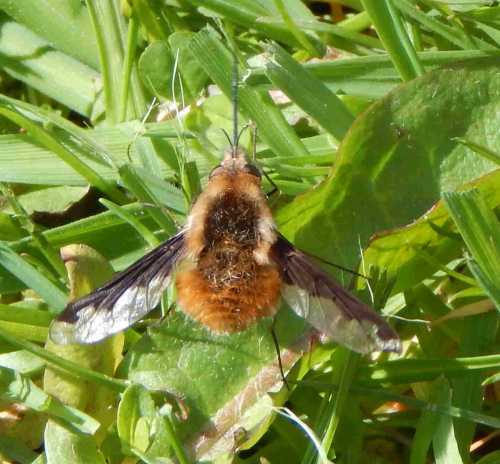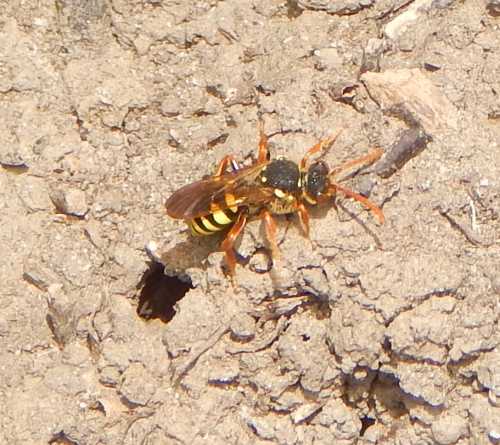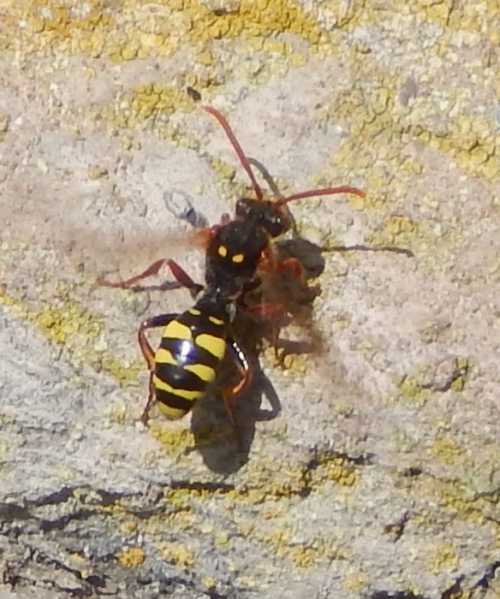Six-Banded Nomad Bee - Nomada sexfasciata
Nomada bees provide excellent clues as to the presence of other bee species - namely, their hosts! In fact - this is a good general tip when bee-spotting: cleptoparasites seen patrolling an area will generally signal the presence and nest sites of the target host species.
Thus, when I saw this six-banded nomad bee - Nomada sexfasciata female on an old stone wall, it was likely that its host, the Long-horned bee - Eucera longicornis female would be close by, along with the nest site of the host. Sure enough, below is a female long-horned bee feeding on wallflowers - on the same wall where Nomada sexfasciata was present.
Nomada are rather wasp-like in appearance. Measuring 9-10mm, these are quite large Nomada species. They belong in the Apidae bee family, which contains more cleptoparasitic bees than any other family.
Six-banded nomad bee - Nomada sexfasciata: Habitat
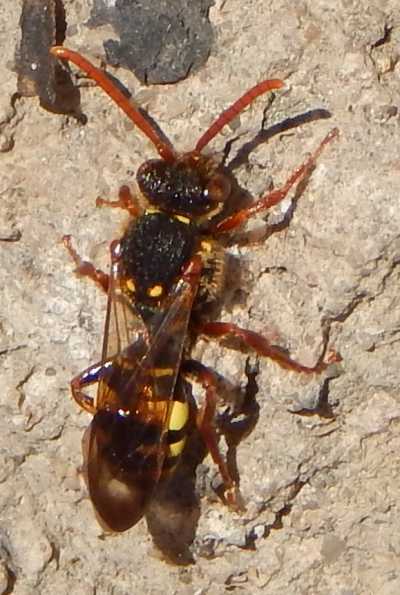 Six-Banded Nomad Bee - Nomada sexfasciata - female.
Six-Banded Nomad Bee - Nomada sexfasciata - female.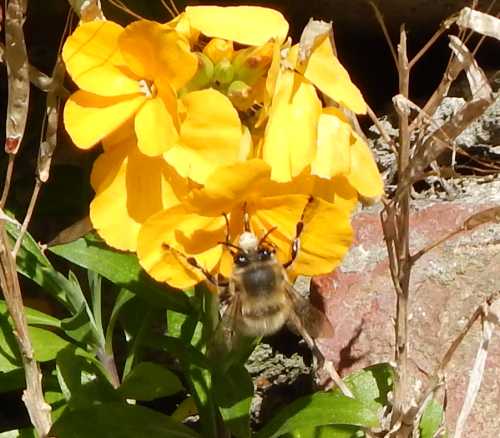 Above: Long-horned bee - Eucera longicornis (female) - host species of Nomada sexfasciata.
Above: Long-horned bee - Eucera longicornis (female) - host species of Nomada sexfasciata.It's not surprising that the six-banded nomad bee will be found wherever its host thrives. Its host - the long-horned bee, makes its nest in soft rock cliffs, but is also found in old walls, such as those seen around old industrial brownfield sites.
On this occasion, the nest was located in an old garden wall - actually across the road from an old brownfield site and wild-flower rich wooded valley.
Six-banded nomad bee - Nomada sexfasciata: cleptoparasitic behaviours
As stated, like all Nomada species, N. sexfasciata is a cleptoparasite.
They patrol areas where target host nests are found. If stationary, you may see this bee waiting on a wall or rock, typically facing the opening of a crevice or hole - it's likely that it's the entrance to a potential host nest, and she'll be waiting for the host female to leave the nest before entering herself.
Upon entering the nest, she lays an egg in the nest cell of the host bee. Once the egg hatches, the larva will eat the provision of pollen left by the host bee, and destroy the grub or egg of the host.
Below you can see this six-banded nomad bee waiting close to the entrance of her target host, which is in the wall.
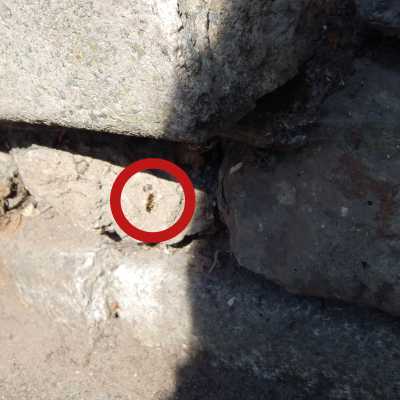 Six-Banded Nomad Bee - Nomada sexfasciata - waiting by the host nest of the long-horned bee.
Six-Banded Nomad Bee - Nomada sexfasciata - waiting by the host nest of the long-horned bee.Six-banded nomad bee - Nomada sexfasciata: flowers visited
These bees can be seen foraging on sowthistles, kidney vetch and geranium species.
Note that being a cleptoparasite, this Nomad bee does not collect pollen, relying instead on the pollen provided by the host to feed its young.
If you found this page helpful or interesting, I'd really be grateful if you would share it with others - if not this page, perhaps another, such as Gardening For Bees.
Thank you so much :) .
